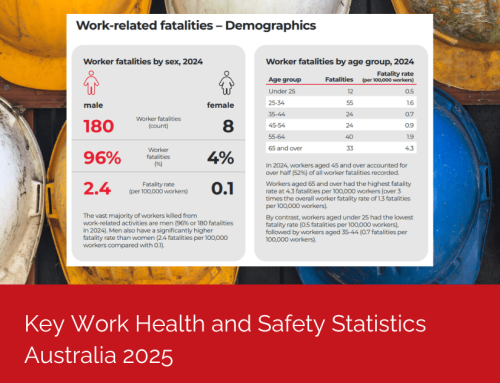
To begin making an impact, leaders must first understand the difference between personal wellbeing and wellness at work so they can focus on the areas they can influence.
Personal wellbeing encompasses a broad range of aspects, such as work, financial, physical, social, and mental health, all of which are interconnected and contribute to an individual’s overall happiness and health.
In contrast, wellness at work specifically relates to the factors within the workplace that affect an employee’s overall experience. This includes their physical safety and mental health, the work environment, social interactions, and diversity and inclusion. You can read more about the distinction here >>.
Understanding this difference allows leaders to target impactful improvements within their workplace culture.
Wellness at work is a shared responsibility with leaders, managers, and employees all having a part to play. While employees are responsible for managing their own mental health, leadership must provide the right environment and resources to support them, ensuring a mentally healthy workplace for everyone.

Here are four things leaders can do to enhance wellbeing and wellness at work.
1. Know your legal obligations to proactively prevent psychosocial hazards in the workplace
To support mental health and wellness at work effectively, organisations must address psychosocial hazards, which are now part of the updated WHS regulations in most states. A psychosocial hazard can arise from factors like work design, environment, or interactions, potentially causing psychological harm. Under the new Regulations, leaders are required to take proactive measures to identify and mitigate these hazards. You can find out more about these hazards here >>.
2. Implement supportive policies
Leaders should take an active role in developing and implementing policies that proactively prevent psychosocial hazards, promote work-life balance, connection, a healthy workplace culture and provide support for employees’ mental health needs. This can include redesigning work, flexible working hours, mental health days, access to employee assistance programs (EAP’s), and training programs.
By implementing and demonstrating a commitment to these policies, while still holding people accountable for performance measures, leaders get on the ‘front foot’ to proactively prevent mental health injuries at work occurring in the first place, reducing stress and burnout and creating a more positive and productive work environment.
3. Leadership training: Build skills for awareness
To be effective in supporting wellness at work, leaders need training that equips them to recognise signs and symptoms of ‘unwellness’, especially mental health as well as knowing how to identify signs and symptoms in the other five critical areas.
To achieve this, leaders need essential skills such as empathy, active listening, authenticity, and mental health literacy, and the ability to apply psychosocial and physical controls. By developing these competencies, leaders can identify potential problems early and provide employees with the support they need.
4. Encourage open communication and lead by example
Leaders should foster an environment where employees feel safe discussing mental health without fear of stigma. Encouraging regular conversations during team meetings, providing accessible feedback channels, and actively listening are essential for creating a supportive workplace.
Leaders also set the tone for openness in this and other areas of wellness at work. This can be done by sharing their own experiences and valuing connection and social interactions, particularly in the hybrid workplace. When leaders normalise wellness at work, these conversations reduce stigma. Leaders may also wish to provide resources to support other areas of wellbeing such as optional, free budgeting and financial literacy coaching.
Prioritising wellness at work is no longer just a task for HR—it’s a leadership responsibility. By investing in leadership training, open communication, compliance with WHS regulations, and leading by example, leaders can create a culture that genuinely values mental wellbeing and wellness at work.

Want to read more of our wellbeing edition articles?
The role of leaders in enhancing wellbeing and wellness at work






